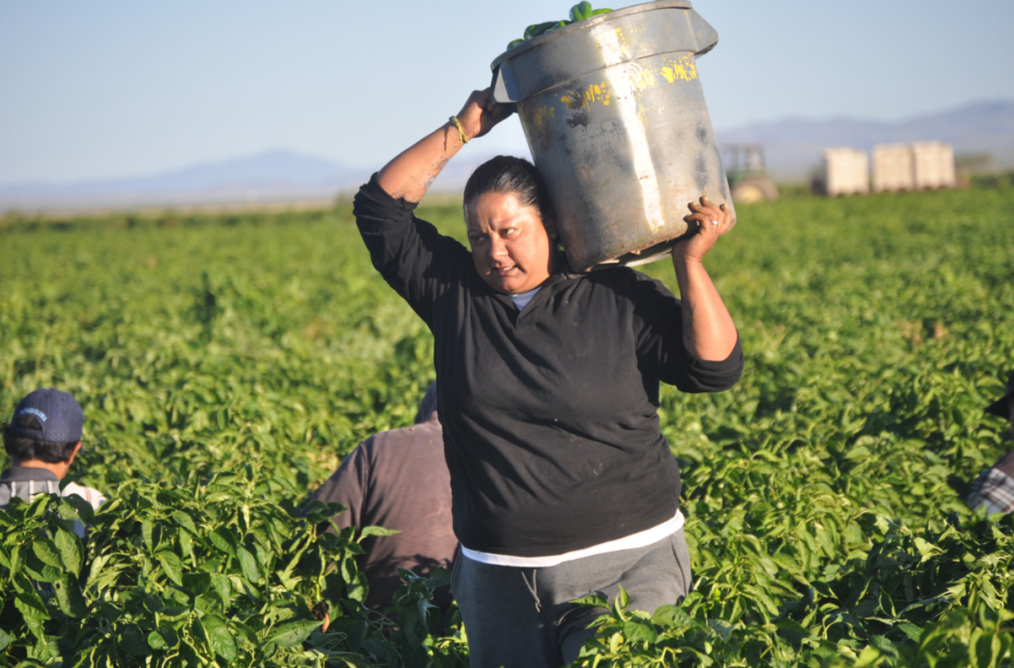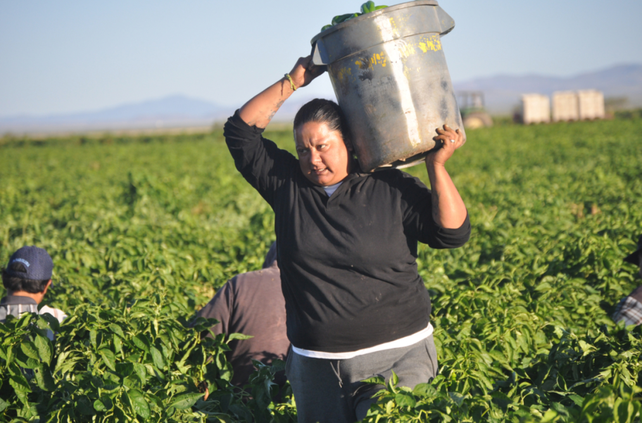It’s a nice toasty 100 degrees plus today.
The odds are you are spending most of the time today inside an air conditioned building.
At some point you will eat. And if it involves vegetables or fruits the odds are overwhelming it required back breaking work by farm workers to harvest.
Given that well over 50 percent of this country’s vegetables, nuts, and fruit come from California — primarily the San Joaquin Valley — you have a pretty good idea of what it is like to be working outside.
It’s not the type of job that can be done at night. Harvests take place during the day including when heat reaches its zenith. There is a limited window to harvest food.
Now imagine what would happen if you were told your pay was going to be reduced from $1.40 an hour to $1.25 an hour for toiling in the fields. In reality, the pay was less. It was 90 cents per hour plus 10 cents per lug picked before unscrupulous farm worker contractors and corporate farmers subtracted things such as paying 25 cents for a cup of water. That happened in 1965. Two large corporations that had table grape vineyards as a small part of their holdings decided they needed a bigger profit margin.
It’s what triggered the grape boycott 57 years ago. First the Agricultural Workers Organizing Committee — predominately consisting of Filipino workers — went on strike when the big Delano growers slashed wages. They were joined within a week by the National Farm Workers Associated headed up by a young Casar Chavez. Soon they joined forces as the United Farm Workers.
What followed was the most effective labor boycott in California history. At one point 12 percent of the country’s consumers said they were no longer buying table grapes.
In March 1966, the UFW undertook a 340-mile march from Delano to Sacramento to pressure the state to enforce laws that had been on the books for years to protect farm workers but were widely ignored.
One of the overnight stops they made was in Manteca. They set up a temporary camp at Southside Park just south of downtown.
At the time, many area growers weren’t exactly enamored with the UFW fearing yet another squeeze on their ability to make a living. It’s ironic in a way given several farm workers over the years regarded San Joaquin County growers as some of the best to work for.
In reality growers that are family farms and not a cog in a corporation and farm workers are at the mercy of large concerns such as Walmart and food processing giants.
As the titans of commerce battle for market share one strategy they deploy more often than not is to put the squeeze on suppliers or in the case of produce, the growers.
That pressure in turn trickles down to field workers.
It’s ironic. The Walmarts, Apples, Googles, and Amazons of the world judge their success on how much they can grow their profit margin while doing business only with those concerns that will slash their profit margins to keep their business.
When that pressure is applied to a labor intensive field such as growing food, the only real cutback that can take place is in the cost of labor. Walmart has a track record of having no qualms about corporate actions that ultimately hurt the poorest of Americans.
The most poignant examples over the years have been Walmart hiring firms to clean their stores that required the same manpower they used but they paid less for it. The contractors were able to make that magically work by hiring illegals that they paid less than prevailing minimum wages that Wal-Mart had to pay when they hired their own custodians.
Of course, Walmart denied any knowledge of such wrong doing by contractors or sub-contractors even though it wouldn’t have taken much time to pencil out that it was impossible to do the wok and still be legally compliant with wage and labor laws. Fines that corporations like Walmart ultimately get are so miniscule compared to their hourly profits that it is considered a cost of doing business and a very profitable one.
Of course, we don’t help the situation.
Americans squawk perhaps more about the price of food going up than anything else. But the truth is virtually every year since 1930 based on tracking by the United States Department of Agriculture we are spending less and less of our household income for food.
Today we spend less than 10 percent — and that includes what we eat at home and at restaurants. That’s down from 24.2 percent in 1930.
We have no problem forking out big bucks for gadgets and electronics, but for basics such as food we have a cow if a loaf of bread goes up a nickel.
And when it goes up a nickel, the last to benefit — if they ever do — is the farm workers followed by growers.
This column is the opinion of editor, Dennis Wyatt, and does not necessarily represent the opinions of The Bulletin or 209 Multimedia. He can be reached at dwyatt@mantecabulletin.com





